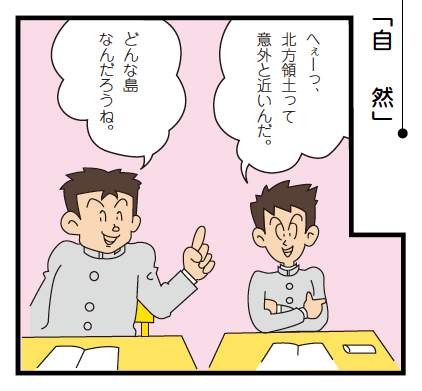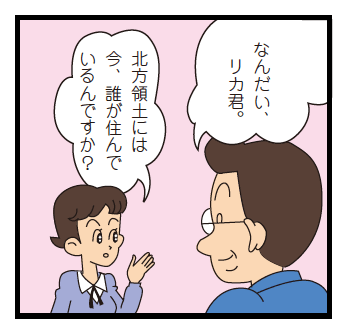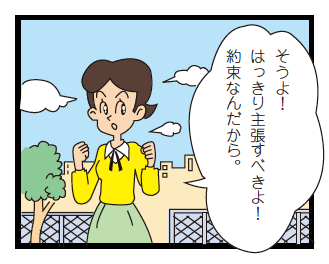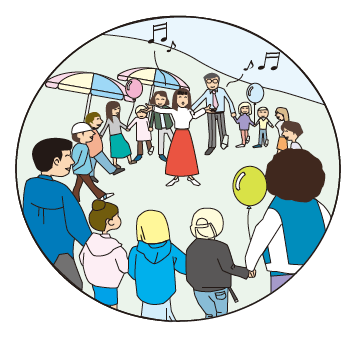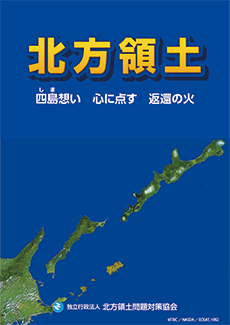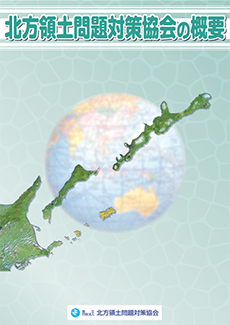Give it a try! Independent research report
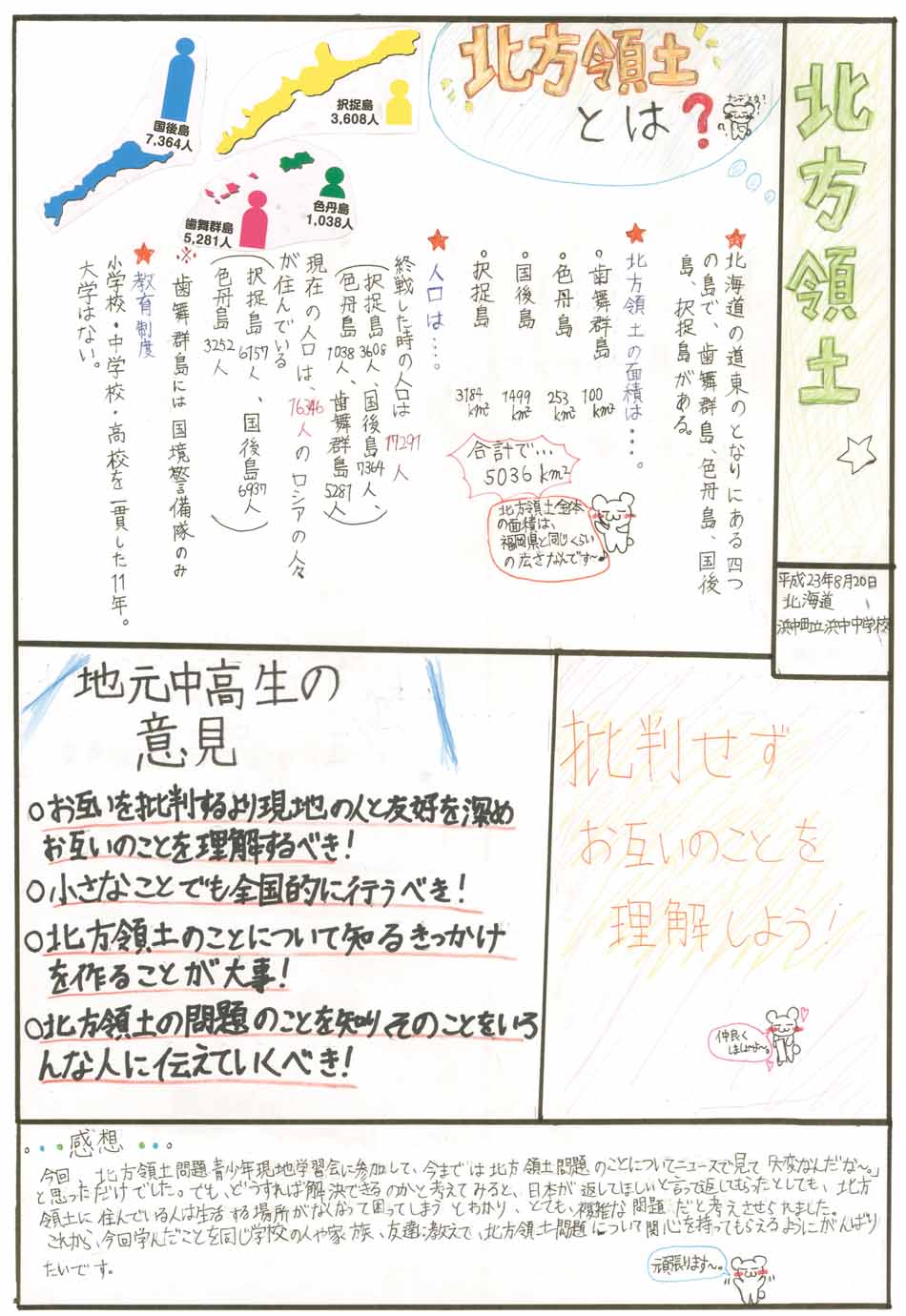
Step 1: Prepare the necessary items.
-
Paper: A3 size or larger. You can use any size, but you
may want to use large paper when giving a presentation to
your class.
Colored pencils or markers
Pamphlets outlining the Northern Territories:
Print out “The Northern Territories,” “I see! I get it!
Northern Territories” and other pamphlets.
Scissors Glue Ruler
Step 2: Collect information.
Collect information on the Northern Territories using
pamphlets or online.
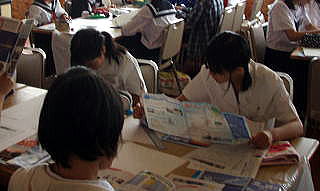
Step 3: Get organized.
Itemize important points, such as those of the experiences of
those who lived on the four northern islands, and think about
what you want to write in your report.

Step 4: Create an easy-to-read report.
Look at the pamphlets, use scissors to cut out the areas that
you think are important, and glue them onto the paper.
Make it clear and colorful with colored pencils and/or markers

Step 5: List your references.
List books, pamphlets and websites that you used as references
when making the report.
- When referring to books and/or magazines
-
List the names of the books and/or magazines, the authors’
names (names of the persons or companies that wrote the
books), the publishers’ names (names of the companies that
published the books), years of publication (years of
publication of the books).
- When referring to websites
- List the names and addresses of the websites.
Step 6: Write your impressions
Summarize what you felt and learned in your own words.
It's very important to write your impressions.
Step 7: Make a presentation and compare it with other
presentations.
Make a presentation on what you learned and felt about the
Northern Territories in your independent research report.
If all class members make reports, compare yours with those of
your friends, and think about what they felt.
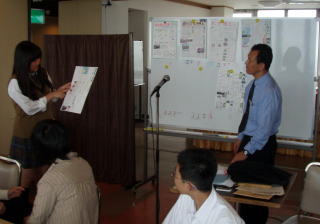
Note: The photos on this page are from a local youth workshop held
in Nemuro City on August 13 and 14, 2009.

